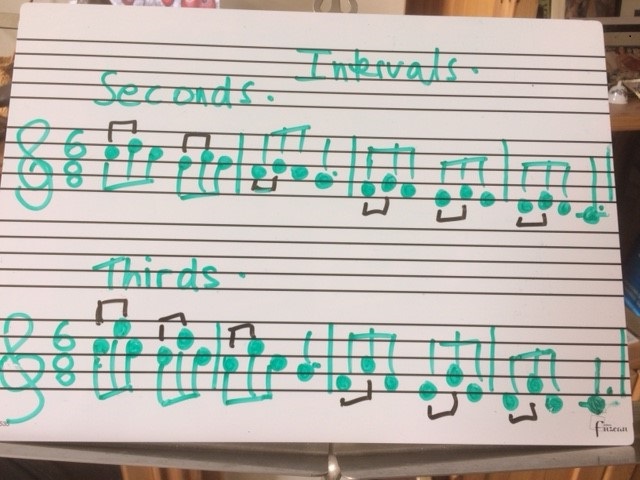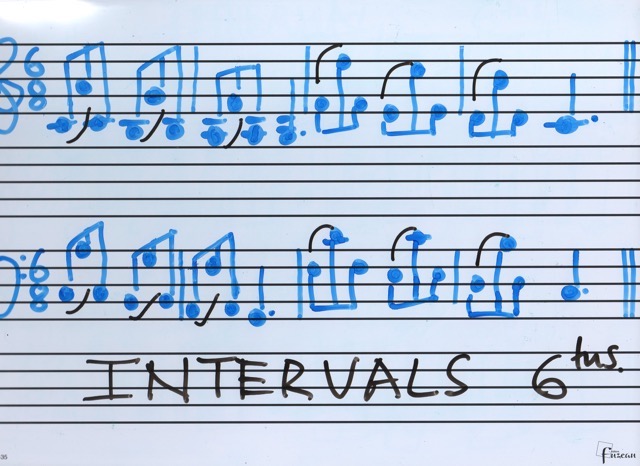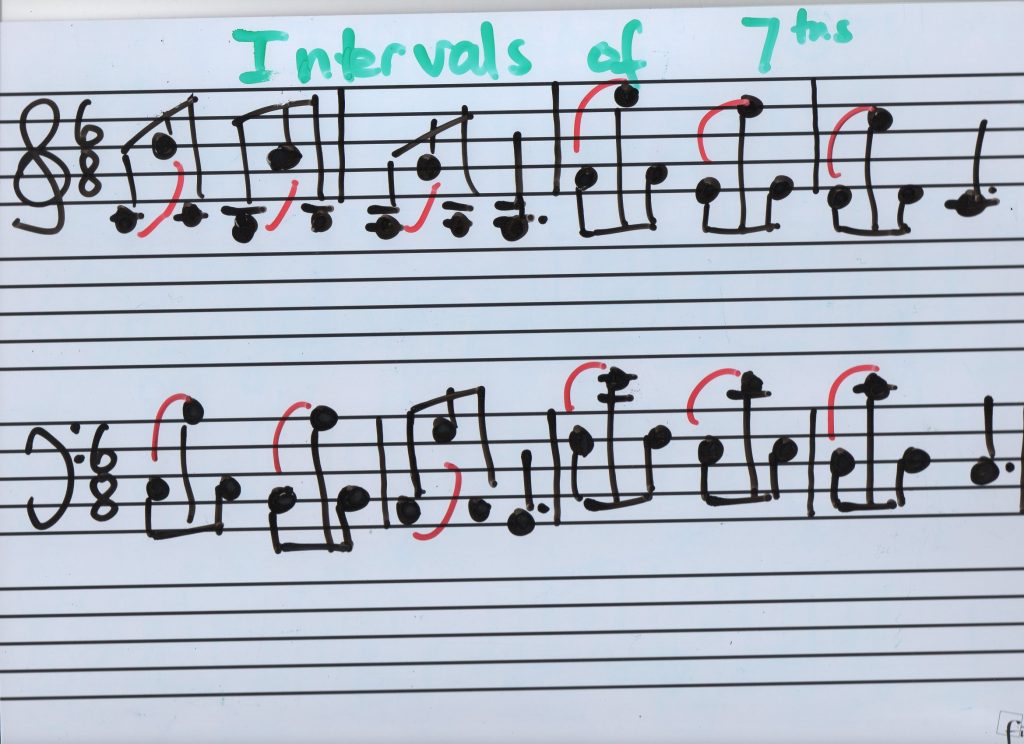Vaccai singing exercises
Click on the link to download
Vaccai 01 fifths p13 on sheets
Vaccai 02 seventh p15 on sheets
Vaccai 03 octave p15 on sheets
Other Vaccai exercises are available on the Successful Singing website. The Vaccai exercises are here
Gills Singing exercises
Gill recorded these very helpful voice exercises when we realised we would not be able to sing together as normal. We can use the exercises as a warm up and to learn intervals. Singing on our own offers us a chance to explore our own voices and work out what we need to concentrate on.
The exercises were recorded via Zoom (hence the audio/video quality), but you just need to click below. Gill leaves a space for you to ‘sing back to her’.
She suggests we all stand up to do the exercises, and she advises we think more about our breathing and our abdomen, than on what our mouths are doing.
Exercise 1 : Ee Eh Ah! Ascending/descending scale – choose your starting note from the chord. Begin with a slow in-breath, think about the well-formed clear vowel sounds, engage the diaphragm and sing back to Gill!
Exercise 2 : Ee Eh Ah – with a florid rhythm! Again, choose your starting note from the piano chord and then sing back to the piano part. We are exercising the vocal muscles and building up strength, stamina and flexibility. Take a short rest of about a minute in between exercises.
Exercise 3 : ‘Nno!’ This exercise (starting on A Flat) connects a humming consonant with the vowel sound that follows – starting with the tongue behind the top teeth. As we ascend the scale, think about making a deeper sound – keeping the voice focussed and centred – by continually engaging the diaphragm.
Exercise 4 : ‘Mee Meh Mah!’ in C major/D major/E major. Florid (lots of notes) semiquaver passages – making sure to eliminate any rogue Hs (aspirates) in the descending scale (so no ‘hahaha!’). Do this by supporting with the abdominal muscles as you descend the scale.
Exercise 5 : Ma, Meh, Mee, Mo, Moo: Ma (as in ‘Ah!’); Meh (as in ‘bed’); Mee (as in ‘me’, ‘see’); Mo (as in ‘mosque’) and Moo (as in ‘food’, ‘moo’) – singing through the notes in a cantabile legato line. This exercise – ascending major arpeggio from A Flat through to C; descending as dominant 7th – focuses on a smooth, flowing arc and needs to be well supported from the abdomen – especially when coming back down. So – start with a slow in-breath, think about the clear vowel sounds, engage the diaphragm and sing through the notes. (‘Legato’ means connecting-the-notes-to-their-neighbour – Not. Sta. Ca. To. Sep. Ar. Ate). (Apologies for the slight disengagement of sound and image)
Exercise 6 : This exercise builds on the previous 5 – one and a half octave ascending arpeggio starting on E. It might help to think of the 6 notes as two groups of three. Singing with ‘Ma’ helps launch the vowel. Sing through the notes – legato. Think about breathing, and as you ascend, think depth in order to keep the sound grounded. Sing back to Gill!
Exercise 7: A leaping octave, descending in two groups of 3 – on the sounds ‘ah’, ‘eh’, ‘ee’, ‘aw’, ‘oo’, commencing with the sound ’N’.
Exercise 8: Vvvoo exercise – starting with a Vvvv sound on an ‘Oo’ and an ‘Ah’ vvvowel. You’ll find the resistance of the Vvvv sound helps strengthen support from your diaphragm. Starting on A Flat, sing back to Gill!
Exercise 9: All the exercises in this section are to help fix intervals in our musical muscle memory. The exercises “dance” in groups of three notes – in a descending scale of C Major. In these exercises there are two dotted crotchets in a bar, each dotted crotchet being worth 3 quaver beats. (FYI – this is the pulse of a Jig, the last movement in a Baroque suite of dances.). Although we start slowly, our aim is to increase our speed (to a maximum of 1 dotted crotchet = 112 on a metronome). We are learning to visualise the notes on the stave, identify the interval and hear it in our head before we sing it – all the time keeping a strong inner pulse (of a dotted crotchet).

Exercise 9b: with the interval of a third: C-E-C, B-D-B, A-C-A, G, F-A-F, E-G-E, D-F-D, C.
Exercise 9c: with the interval of a fourth: C-F-C, B-E-B, A-D-A, G, F-B-F, E-A-E, D-G-D, C.

Exercise 9f: with the interval of a sixth: C-A-C, B-G-B, A-F-A, G, F-D-F, E-C-E, D-B-D, C.

Exercise 9d: with the interval of a fifth: C-G-C, B-F-B, A-E-A, G, F-C-F, E-B-E, D-A-D, C.
Exercise 9g: with the interval of a seventh, which is probably the most tricky: C-B-C, B-A-B, A-G-A, G, F-E-F, E-D-E, D-C-D, C.
